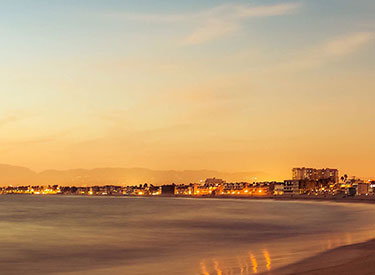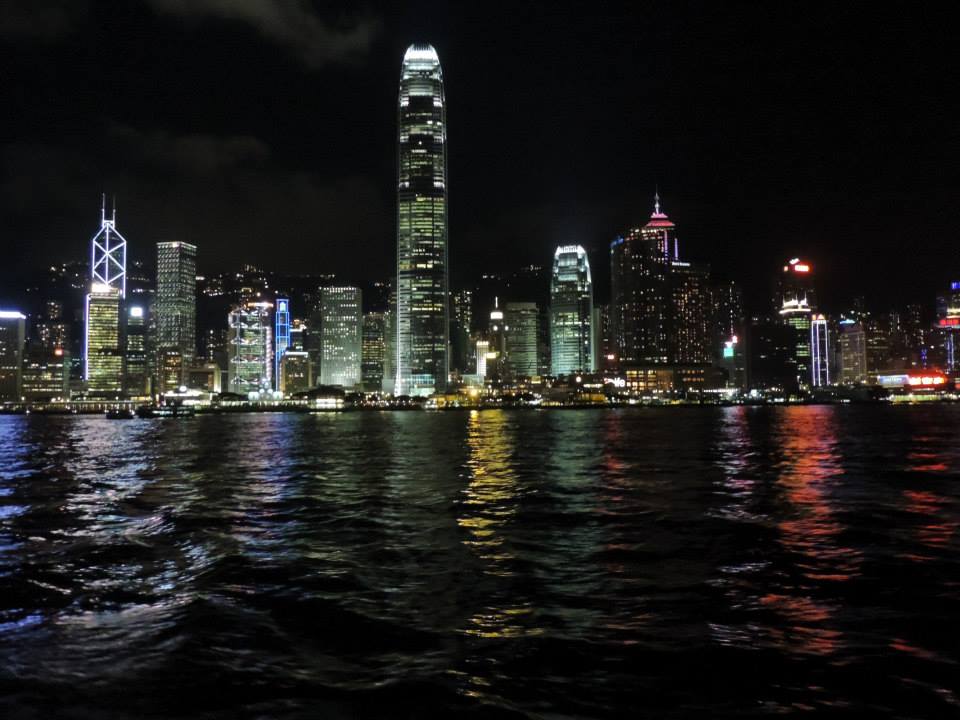


Hong Kong is home to unrivalled shopping, superb dining and a unique blend of Eastern and Western cultures; a dramatic harbour and beautiful mountains and outlying islands.
Bargain your way through bustling street markets, or indulge at luxury department stores, boutiques, designer outlets and more. Relax at the end of the day with a traditional Chinese foot massage or sip a cocktail at one of Hong Kong’s hottest bars. Enjoy great value and good fun at Hong Kong Disneyland and Ocean Park, plus lots, lots more.
Above all, you will find diversity and memorable contrasts at every turn – all within a single compact destination where most points can be reached within an hour.
This spectacular multimedia display, already named the “World’s Largest Permanent Light and Sound Show” by Guinness World Records, has been further expanded to include more than 40 buildings on both sides of Victoria Harbour. The show creates an all-round vision of coloured lights, laser beams and searchlights performing a stunning, unforgettable spectacle synchronised to music and narration that celebrates the energy, spirit and diversity of Hong Kong. There are five main themes — Awakening, Energy, Heritage, Partnership and the finale, Celebration.
For the best view of A Symphony of Lights, take a harbour cruise or head to the waterfront promenades on either side of Victoria Harbour*. The show, organised by the Tourism Commission, is a must-see event on any visit to Hong Kong.
Nightly at 8pm. *Vantage Points: 1. Along the Tsim Sha Tsui waterfront between the Avenue of Stars and the Hong Kong Cultural Centre 2. On the waterfront promenade outside the Golden Bauhinia Square in Wan Chai 3. Aboard a harbour cruise.
There’s a reason why The Peak is one of the most popular attractions in Hong Kong: It is absolutely incredible! Looking down from The Peak you’ll be amazed by the spectacular view of the surrounding city skyline, the world-famous Victoria Harbour and Kowloon, towering skyscrapers and peaceful green hillsides.
Getting there is an unforgettable trip. There’s nothing in the world like the Peak Tram. Pulled by steel cables, the tram climbs 373 metres (about 1,200 feet). It’s so steep that the buildings you pass look like they’re leaning! Whether you’re going up or coming down, you’ll love this trip.
And now this fabulous vista has been further enhanced by the 2006 revitalisation of one of Hong Kong’s most striking landmarks, The Peak Tower. Even more than before, it’s a destination in its own right.
No trip to Hong Kong would be complete without a visit to the Giant Buddha which sits serenely atop Ngong Ping plateau amid the spectacular mountain scenery of Lantau Island. The eyes, lips, incline of the head and even the right hand (raised to deliver a blessing to all), combine to lend great depth of character and dignity to this extraordinary statue.
The majestic figure of the seated Buddha was cast in China and took 12 years to complete. It was unveiled in December 1993 amid deeply religious ceremonies.
Visitors can climb more than 200 steps to reach the platform where the Buddha is seated. Besides attracting Buddhists from all over Asia, the magnificent figure with its compelling presence almost instantly transformed the remote Po Lin Monastery with its devout monks into a must-visit on tourist schedules.
The Po Lin Monastery is set amid spectacular mountain scenery on the Ngong Ping plateau. Besides admiring the massive statue there is also much to see and do at the monastery itself with its various figures of gods and other colourful manifestations of aspects of the Buddhist religion. You can even enjoy a vegetarian lunch.
Adventurous travellers should head straight for these funky markets that best illustrate Hong Kong’s living culture. Each of these markets has its own charm and contains hidden treasures just waiting to be uncovered. Even better, you can haggle! Great for all kinds of consumer goodies.
Ladies’ Market in Tung Choi Street is the place for bags, accessories and inexpensive women’s clothing. Men’s and children’s clothing and toys are also on sale. Tung Choi Street, Mong Kok, Kowloon (MTR Mongkok Station Exit E2) noon – 11:30pm
Temple Street Night Market is ordered chaos in action and the perfect place to pick up a few bargains. Temple Street is awash with rows of brightly lit stalls hawking an astonishing variety of clothing, pens, watches, CDs, cassettes, electronic gadgets, hardware and luggage. The busy food stalls offer a range of delicacies including fresh seafood and hotpot dishes to tempt your appetite. Fortune-tellers cluster at the Yau Ma Tei end of the street, and so do Chinese opera enthusiasts seeking kindred spirits for impromptu performances. Simply absorbing, Temple Street is a memorable experience.
Temple Street, Yau Ma Tei, Kowloon (MTR Jordan Station Exit A. Turn right into Jordan Road, then right into Temple Street). 4pm – midnight.
Stanley Market is the perfect place to buy something special for friends or relatives. The historic lanes in this old fishing village are jam-packed with vendors selling Chinese artwork, silk collectibles and curios, as well as larger-sized clothing. Plan to stay for a few hours and sample the fine restaurants in the restored Murray House or along the main street on the waterfront.
Stanley Market Road, Stanley, Hong Kong Island (MTR Hong Kong Station Exit D and take bus 6, 6A, 6X, 66 or 260 from Exchange Square Bus terminus, Central). 10:30am – 6:30pm.
A long, packed roadside market great for inexpensive clothing, accessories and domestic goods. Tiny stalls have goods tumbling off tables and shelves into shoppers’ bags. Many stalls feature hair-related items, bags, women’s tops and blouses, fine knits, cellphone accessories and household items, and at the end is a small wet market and flower stalls with very low prices.
Jardine’s Crescent, Causeway Bay, Hong Kong Island (MTR Causeway Bay Station Exit F) 11am – 9:30pm.
Find ready-to-wear garments or have them made to order. Featuring great designs, fine silk and other fabrics, traditional styles and beautiful colours. Li Yuen Street East and West, Central, Hong Kong Island (MTR Central Station Exit C then walk along Des Voeux Road Central towards Sheung Wan). 10am – 7pm.
Hong Kong is geographically compact and boasts one of the world’s most efficient, safe, affordable and frequent public transport systems. Whether by taxi, ferry, rail, bus or tram, you can get around easily and catch wonderful glimpses of the city along the way.
For convenience, use an Octopus Card electronic stored-value card that is accepted on most public transport.
Getting around Hong Kong and visiting the city”s fantastic attractions couldn’t be easier with the quick and efficient MTR rail system that covers all major districts in the territory, and includes stops at the boundary with Mainland China (Lo Wu and Lok Ma Chau). The MTR consists of ten lines: Island, Tsuen Wan, Kwun Tong, Tseung Kwan O, Tung Chung, West Rail, East Rail, Ma On Shan and Disneyland Resort, as well as an Airport Express. In addition, The MTR operates a Light Rail system running between Yuen Long and Tuen Mun in the New Territories, plus an inter-city train service into Mainland China.
Take a step back in time and explore the bustling north corridor of Hong Kong Island aboard one of the city’s historic trams. These double-decker streetcars have been travelling through Hong Kong’s busiest thoroughfares since 1904 and continue to be a great way to get around. Sit next to the window on the upper deck to get the best views. Neighbourhoods along the way include some of Hong Kong’s most colourful: Western district, Wan Chai, Happy Valley, Causeway Bay and North Point. Trams run from early morning until midnight.
The flat fare is HK$2 and exact change is required. You enter at the back of the tram and pay the exact fare when alighting at the front. Octopus cards are accepted.
With its coastal location and many outlying islands, Hong Kong operates regular ferry routes connecting Hong Kong Island, Kowloon and the Outlying Islands, as well as Macau and neighbouring cities in Mainland China.
Star Ferry
Most notable of all ferries is the humble but legendary Star Ferry service between Kowloon and Hong Kong Island from piers in Tsim Sha Tsui and Hung Hom in Kowloon and Central and Wan Chai on the Island. It offers a memorable and scenic boat trip across one of the most-photographed harbours in the world.
Ferry to outlying islands
Ferries operating from the Central Ferry Piers on Hong Kong Island provide service to the main outlying islands of Peng Chau, Cheung Chau, Lamma and Lantau, including Discovery Bay. Two types of ferries operate on most routes: standard ferries and the slightly more expensive fast ferries.
Spring – March to May.
Temperature and humidity are rising. Evenings can be cool.
Summer – June to August
Hot, humid and sunny, with occasional showers and thunderstorms. The temperature can exceed 31°C.
Autumn – September to November
There are pleasant breezes, plenty of sunshine and comfortable temperatures. Many people regard these as the best months of the year to visit Hong Kong.
Winter – December to February
Cool, dry and cloudy, with occasional cold fronts. The temperature can drop below 10°C in urban areas.
Direct flights to Hong Kong are available from Sydney, Melbourne, Adelaide, Perth and Brisbane. Cathay Pacific fly from Sydney. Melbourne, Brisbane, Perth and Adelaide. Qantas fly from Sydney, Melbourne and Perth. Virgin Atlantic fly direct from Sydney. Ask your personal travel manager to tailor an airfare to suit.
Population: 7 million (2009 estimate)
Languages: Hong Kong’s two official languages are Chinese (Cantonese is widely spoken) and English.
Local Time: GMT + 8.
Currency: Hong Kong dollar (HK$)
Exchange Rate: $AUD1: 7.70 HKD
Visas: Australian and New Zealand nationals whose passports have at least six months’ validity can enter Hong Kong for a period of up to three months without a visa.
Electricity: 220 Volts at 50 Hz
Start creating your itinerary with your local, personal travel manager.